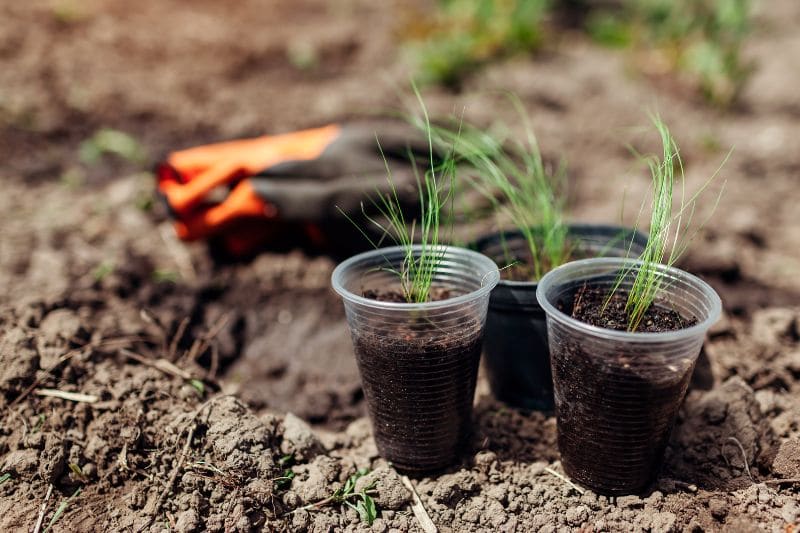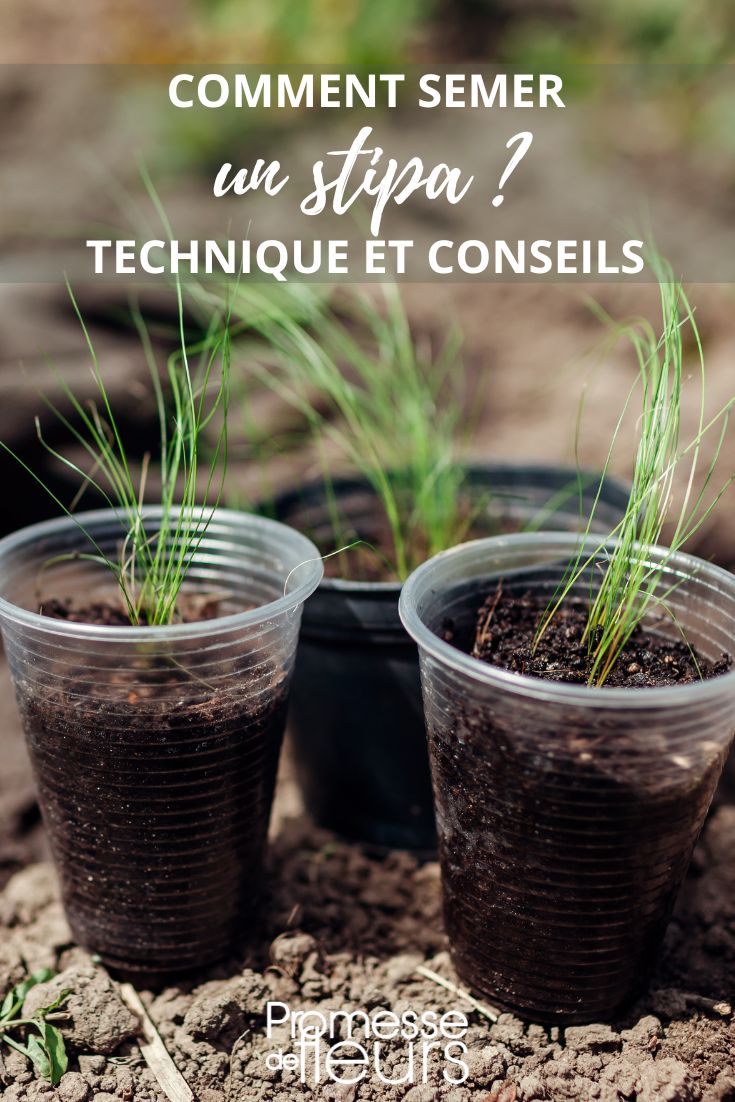Stipa, also called "angel hair", is an ornamental grass prized for its light habit and silky texture. This perennial plant is perfect for bringing a natural, airy look to a bed, border or even a rockery. Hardy and easy to maintain, it adapts to many growing conditions. Sowing stipa allows you to obtain a large number of young plants at low cost, while choosing varieties suited to your garden. Discover in this guide everything you need to know to succeed in sowing this decorative grass.
Why sow stipa?
Sowing stipa seeds offers many advantages:
- Economical: a packet of seeds costs much less than a young plant in a pot. You can save even more by harvesting your own seeds.
- Variety diversity: you can choose specific species according to your preferences.
- Local adaptation: by sowing yourself, you harden your young plants to the specific conditions of your garden.
- Natural decoration: stipa adds movement and lightness to your garden.

When to sow stipa seeds?
The ideal period to sow stipa depends on the chosen method:
- Under cover or indoors: sow seeds between February and April for early development.
- Directly in ground: carry out sowing from April to June, once risk of frost has passed.
Note: sowing under cover allows better control of growing conditions, while direct sowing in ground is more practical for multiplying a large number of young plants.
Where to sow stipa?
- In ground: choose a spot with good sun exposure, with drained soil, even poor soil.
- In pot or under cover: use a light substrate, made of sowing compost (3/4) mixed with sand (1/4) to ensure good drainage.
Note: stipa prefers dry to moderately moist soils and does not tolerate excess water. If your soil is heavy and clayey, favour sowing in a bucket.
Practical steps to sow stipa
Required equipment
- A packet of stipa seeds
- A light substrate: a mix of 2/3 sowing compost and 1/3 river or quarry sand.
- Buckets for indoor or under-cover sowing.
- A watering can with rose for gentle watering.
- A mini-greenhouse or plastic film to maintain humidity.
- Facultative: A dibber or a sowing board to space seeds properly.
Sowing under cover or in buckets
1- Prepare containers: fill your buckets with the compost and sand mix.
2- Sow seeds: place seeds on surface and cover lightly with substrate (about 1 to 2 mm).
3- Water gently, preferably with rainwater. Use a watering can with rose to moisten substrate without waterlogging it.
4- Cover: place your buckets in a mini-greenhouse or cover with plastic film, then set in a bright spot at 15 to 20 °C.
5- Monitor germination: first shoots generally appear after 2 to 3 weeks.

Sowing directly in ground
1- Prepare soil: loosen soil using a spade or an organic-fork. Break clods, then remove stones and adventive plants. If your soil is heavy, improve it by incorporating compost and coarse garden sand to improve drainage.
2- Sow seeds: scatter them or sow in rows spaced 20 cm apart.
3- Cover seeds with a few millimetres of fine soil.
4- Water lightly and keep soil slightly moist until seedlings emerge. Tip: lay a filament of protection to prevent birds from feasting on seeds.
5- Thin seedlings: once young plants are large enough, keep the vigourous ones spaced about 30 cm apart.
After sowing: care and maintenance of young plants
Once seeds have germinated, here is how to care for your young plants:
- Thinning: wait until young plants measure about 5 to 10 cm tall. Remove the weakest seedlings or those too close together by cutting them at their base with scissors to avoid disturbing roots of remaining young plants. Maintain spacing of about 20 to 30 cm between each young plant.
- Hardening off: young stipa plants sown under cover must be gradually accustomed to outdoor conditions before transplanting. Begin by putting plants outside for a few hours a day, gradually increasing exposure time. This avoids thermal shock or leaf scorch.
- Transplanting: if sown in buckets, pot up young plants into larger pots. Wait until plants have 3 to 4 well-formed leaves and roots sufficiently developed, usually 6 to 8 weeks after sowing. Ideally, keep your pots frost-free, for example in a greenhouse, during winter, then transplant young plants into ground the following spring.
- Winter protection: for pots, place them in a frost-free greenhouse. For young plants in ground, use a protective tunnel in case of forecast frost.
- Watering: water lightly but regularly, avoiding excess, to keep substrate or soil moist, especially during hot or dry periods.
- Exposure: place your young plants in a sunny spot to promote growth.
- Weeding: remove adventive plants around young plants to prevent them competing with stipa for nutrients and water.
































Comments